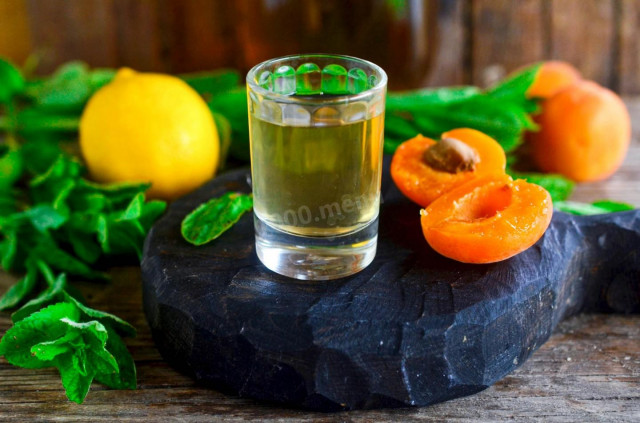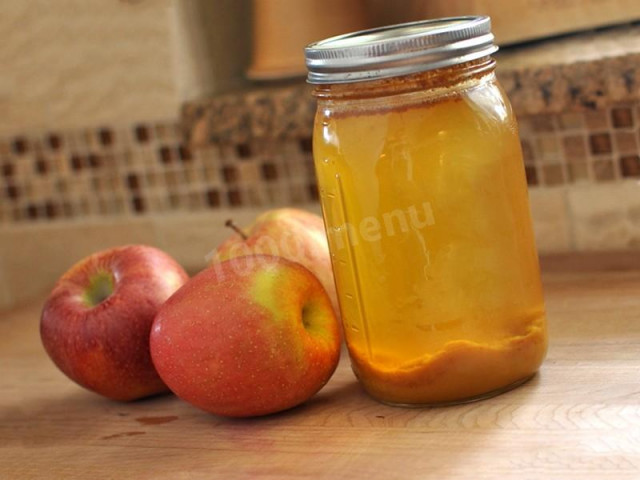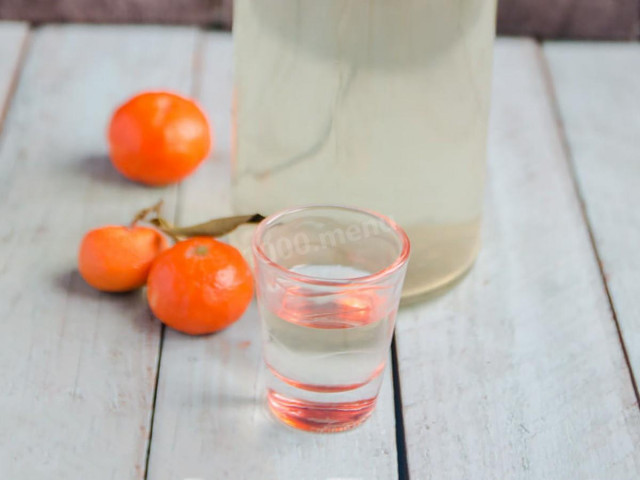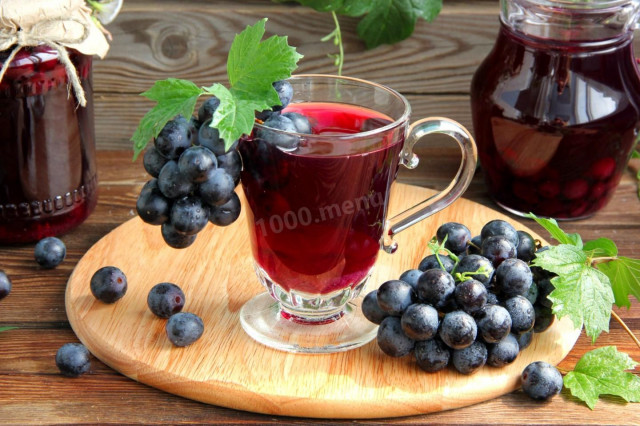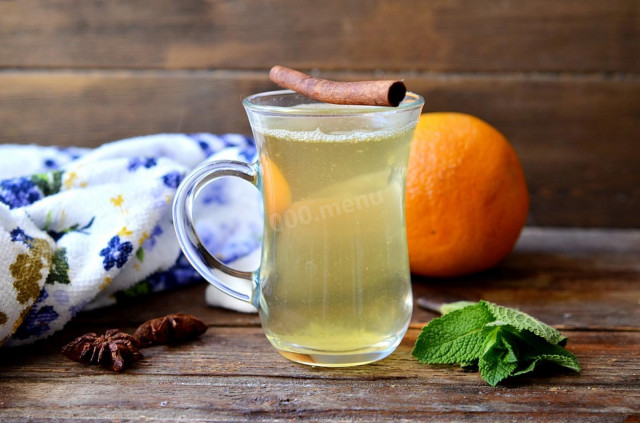Composition / ingredients
Step-by-step cooking
Step 1:
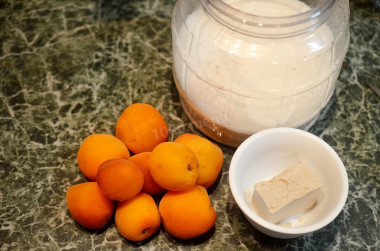
How to make moonshine from apricots? Prepare all the necessary products. Apricots should be ripe, but in no case rotten or moldy. I put fresh yeast, but instead of them you can take wine or even dry yeast (it will take 1 tbsp.spoon).
Step 2:

To begin with, we will need braga - we will start with its preparation. Do not wash apricots in any case. Their surface just contains bacteria that will cause fermentation of the braga. Remove the seeds from the fruit, cut them in half and transfer to a large jar. Keep in mind that the braga will take 2/3 of the jar, so if you have a 3-liter jar, then the braga will turn out to be 2 liters. Apricots need to be kneaded - I used an ordinary wooden pusher.
Step 3:
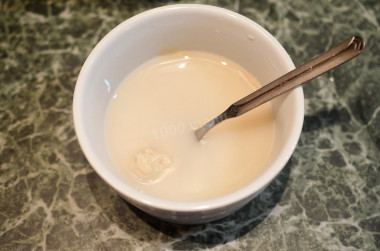
Break up the fresh yeast and dilute it in 100 ml of warm water in a separate bowl.
Step 4:

Pour the diluted yeast into a jar with crushed apricots.
Step 5:

Add sugar to the apricots. In principle, you can not add sugar, there is enough sweetness of apricots, and the braga will also turn out good. But if you add sugar, the yield of the finished moonshine will be greater, so I added sugar anyway.
Step 6:
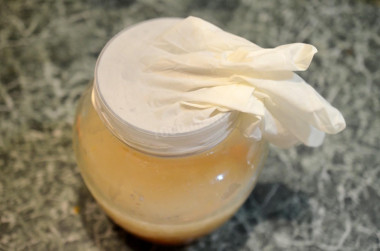
I make the braga old "grandfather's" method: I put a disposable nitrile glove on top of the jar. You can use a water lock. Put the jar away in a warm place. Not that it should be a place near the battery, but it shouldn't be cold either. You can also wrap the jar, for example, with an old blanket.
Step 7:
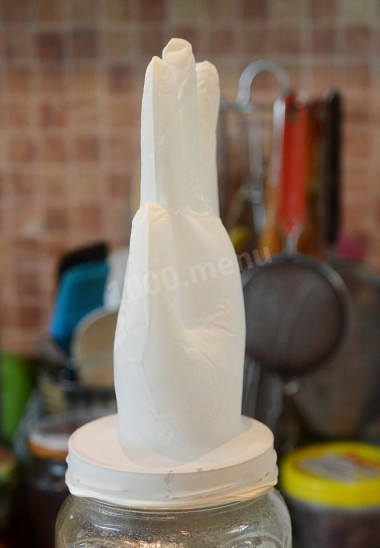
When the braga starts to wander, the glove will inflate and rise. And only when the glove is deflated again, and in some cases it is even absorbed into the jar, then the braga is ready and suitable for distillation. The time can vary from 10 to 30 days. My braga wandered for 17 days.
Step 8:

We have a braga with pieces of fruit and in this case there are three options for action. The first: this is to strain the braga through a sieve and, already filtered, pour into a moonshine still. I just used this method. The second option is to pour braga with pieces of fruit into the moonshine machine - in this case, there is a high probability that the fruit will burn, and it will be very difficult to wash the device. The hole into which the braga is poured is very narrow!
Step 9:
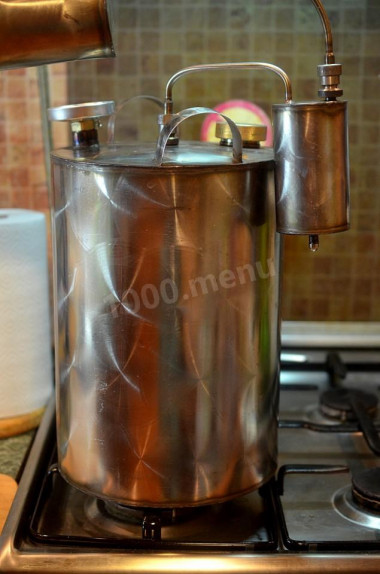
The third option: the braga is filtered, but the fruits are hung in gauze so that they hang in the moonshine. Choose the method that you like best. Pour the braga into the moonshine still. Put it on the fire and start distilling the braga. As soon as the temperature rises above 70C, turn on cold water to cool the liquid. Do not allow the temperature to rise. Such moonshine can already be drunk, so it was done before. But him... it smells like moonshine.
Step 10:
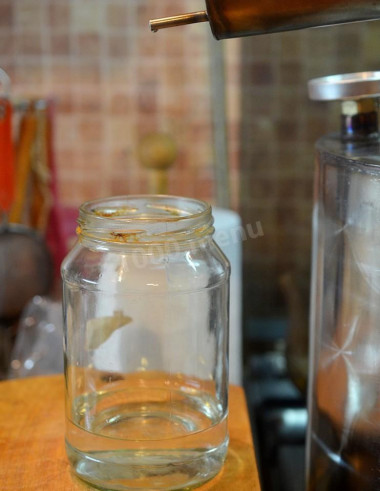
So I preferred double cleaning. Dilute the finished moonshine with clean water to about 20 degrees of alcohol (you will need an alcohol meter) or about 1 liter of moonshine dilute 400 ml of water and distill again. But drain the first 100 ml and the last 100 ml, they are not needed. These are the so-called "horns and hooves", which contain the most harmful substances. It is believed that this method of making moonshine is the most correct.
Step 11:

I repeat once again that you can use moonshine in moderation even after the first distillation - most of them do so. But after the second distillation, a more refined product without an unpleasant smell is obtained. For the color, I added a spoonful of tea leaves to the finished moonshine. Observe the measure of alcohol consumption!
Calorie content of the products possible in the composition of the dish
- Granulated sugar - 398 kcal/100g
- Sugar - 398 kcal/100g
- Apricots - 46 kcal/100g
- Canned apricots - 50 kcal/100g
- Fresh yeast - 109 kcal/100g

